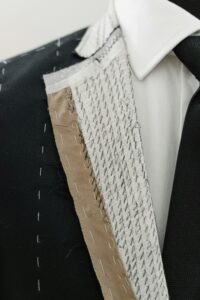



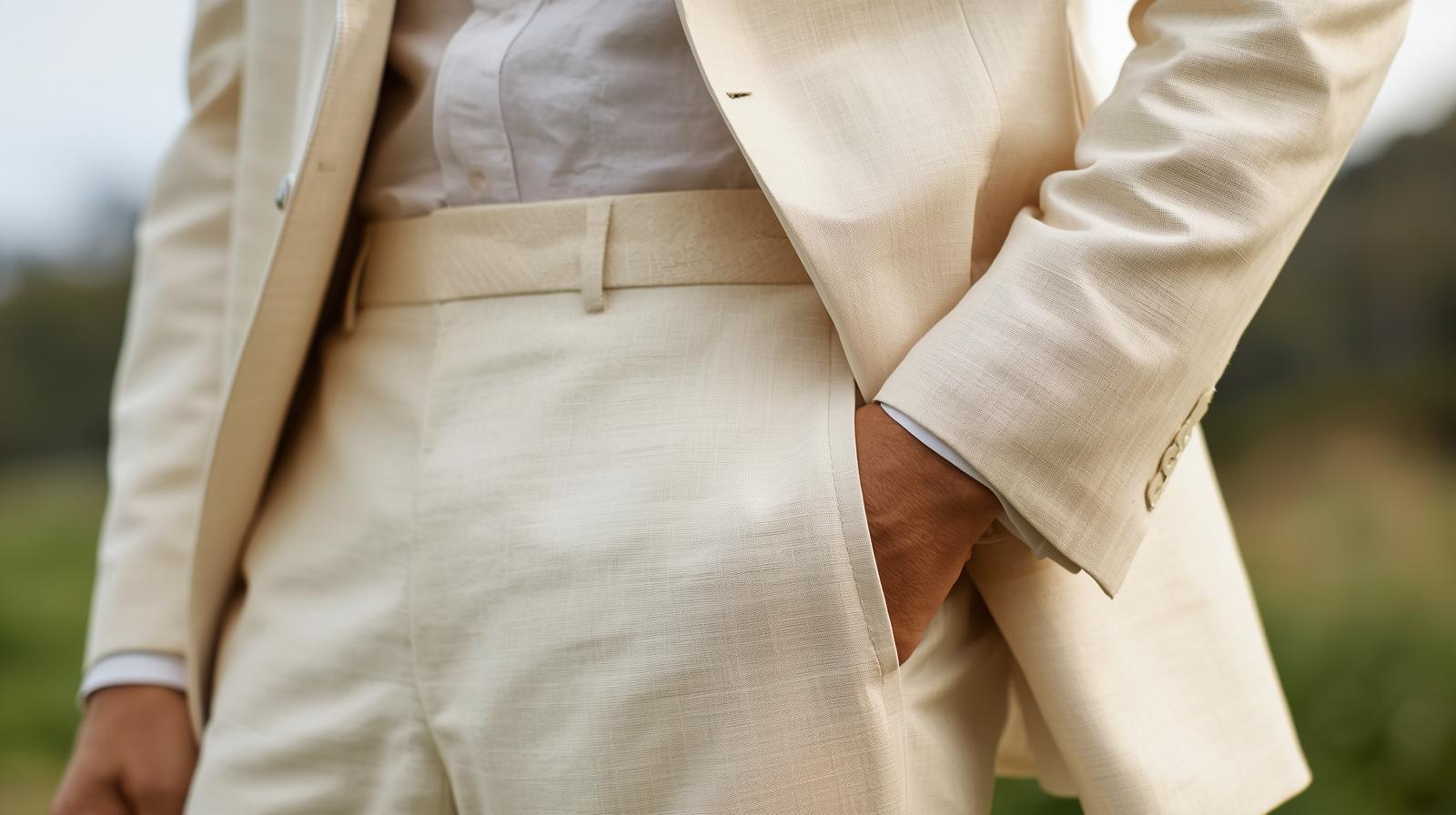
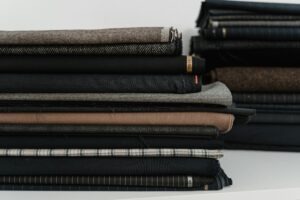
Wool vs Linen vs Cotton: The Best Suit Fabric for Bangkok | Velour & Waza
When it comes to tailoring a suit, the fabric is everything. It’s not just about looks — it’s about comfort, durability, and versatility. Choose the wrong material, and your beautiful cut won’t save you from overheating, wrinkling, or fading too fast. Conversely, pick the right fabric, and the suit will feel like a second skin — stylish, functional, and enduring.
In this post, we’ll compare The Best Suit Fabric for Bangkok three of the most commond natural fabrics used in tailored garments: wool, linen, and cotton. We’ll explore their strengths and weaknesses, ideal use-cases (especially in a tropical climate like Bangkok), and help you decide which is best for your needs.
Ready? Let’s start by understanding what each fabric brings to the tablee for you…

Wool is an animal fiber (usually from sheep, sometimes goats for special varieties) with natural crimp and elasticity, which helps it trap air and regulate temperature. Officine Paladino+1 In the world of suiting, “super” numbers (e.g. Super 100s, 120s, 150s) often indicate fineness of the fiber — the finer the wool, the softer and more luxurious it feels (but also more delicate). Officine Paladino+2The Black Tux+2
Because of its versatility, wool is oftn called the go-to fabric for suits. It functions well across multiple seasons.
Breathability and Temperature Regulation
Thanks to its natural crimp and structure, wool can trap heat when it’s cold yet release heat when it’s warm. This makes it useful year-round. The Suit Depot+3Officine Paladino+3Westwood Hart+3
Wrinkle Resistance & Drape
Fine wools have natural elasticity, which helps them resist creasing and boune back. Officine Paladino+2The Black Tux+2
Durability & Longevity
A well-made wool suit lasts many years if properly maintained.
Moisture & Stain Behavior
Wool naturally repels light rain and resists staining (due to lanolin) better than many fabrics.
Elegant appearance
Wool has a refined drape and texture, giving a sharp and polish looks.
Heat & weight
In very hot, humid climats, heavier wool fabrics can feel stifling.
Cost
High-quality wool (especially fine “Super” numbers) commands a higher price.
Care
Frequent dry cleaning and harsh chemicals can strip its natural oils (lanolin), reducing life span.
Less ideal in extreme climates
In extremely humid or tropical settings, the thick wool can feel heavy compared to linen or cotton.
Use tropical, open-weave, or “hopsack” wool for warmer months. These weaves maximize breathability.
For business, formal weard, or year-round suits, wool remains the safest options.
In rainy conditions, wool’s water-repellent properties help it perform better than cotton or linen.
If you want to dive deeper into how to choose the right wool fabric and compare wool vs blends, see our related guide: How to Choose the Right Suiting Fabric. (internal link)
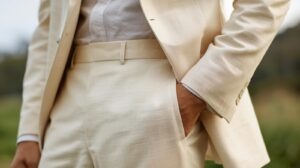
Linen is a plant fiber extracted from flax (the flax plant). Wikipedia+1 It’s one of the oldest textiles known to humanity. Linen fibers are long and strong, but less elastic (so they wrinkle). Wikipedia+1
Exceptional breathability
Linen allows air to circulate freely, making it ideal for hot, humid climate.
Moisture wicking & fast drying
Linen absorbs moisture and releases it quickly, helping keep you cool and dry.
Strength & longevity
Linen is often stronger than cotton (depending on quality). Wikipedia+2The Black Tux+2
Casual, relaxed drape
Its texture gives a laid-back, elegant look — great for summer evnts or casual suits.
Wrinkling
Because linen lacks stretch, it creases very easily — more so than wool or cotton.
Coarseness in hand
Pure linen can sometimes feel rough or stiff, especially when new.
Lack of structure
Suits made fully from linen may not hold rigid shapes (lapels, sharp lines) as well as wool.
Seasonal or event wear
Full-linen suits are better suited for warm seasons or casual/formal summer events rather than all-year wear.
Ideal for summer suits, vacation wear, resort weddings, or outdor events in hot climate.
Use linen in blazer, sports coat, or unstructured jacket form to reduce visible creases.
For a compromise, consider linen blends (with cotton or even wool) to soften texture and reduce wrinkle impact.
Use lighter colors (beige, light gray, pastels) to reflect heat.
If you like, I can show you some sample linen-blend fabrics we carry in the shop.
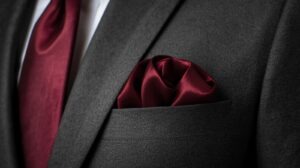
Cotton is also a plant fiber, harvested from cotton plants (from the seed pods). It’s soft, breathable, and widely used. Tip Top+2The Black Tux+2
Soft and comfortable
Cotton feels gentle on the skin and is familiar in wear.
Breathability in warm climates
It allows decent airflow.
Variety of textures & weights
You can find cotton suiting fabrics in many weaves (poplin, twill, canvas) and weights.
Lower cost than high-end wool
Good cotton fabrics often cost less than fine wool.
Wrinkling & creasing
Cotton wrinkles more easily than wool (though less than linen in some cases).
Less stretch / recovery
Cotton lacks elasticity, so it can sag or lose shape over time.
Limited drape / structure
Heavier cotton works better, but it may feel bulkier.
Moisture / heat
Cotton can absorb moisture but doesn’t wick or release it as well as wool or linen. In humid climates, it can cling to the body.
Lightweight cotton suits (in open weaves) can be used for everyday wear, casual suits, or travel.
Good option for shirt jackets, cotton chinos or sport blazers in the warmer months.
As a blend with linen or wool, cotton can soften texture or offer price balance.
From comparisons by tailors and fabric houses, cotton is seen as brethable but less resilient compared to wool or linen in many respects. Woolcott St+2Tip Top+2
| Characteristic | Wool | Linen | Cotton |
|---|---|---|---|
| Breathability | Good, moderate | Excellent | Good |
| Wrinkle Resistance | Very good | Poor | Moderate |
| Durability / Longevity | High | High | Moderate to high |
| Feel / Hand / Texture | Smooth, elegant | Rustic, textured | Soft |
| Structure / Drape | Holds shape well | More relaxed | Moderate structure |
| Best For | All seasons, formal wear | Hot climates, summer casual | Everyday, lighter suits |
| Maintenance | Requires careful cleaning | Can be washed, but creases | Easier to launder |
| Cost (per quality) | Higher (esp. fine wool) | Medium to high | Lower to medium |
From this table, you can see each fabric has trade-offs. The “best” choice depends on climate, how often you wear, budget, and desired style.
Since you’re based in Bangkok (hot, humid, occasional rain), your fabric choice needs to balance breathability, structural look, and durability under stress.
Here are guideline to help:
Favor lighter weights and open weaves
Even wool should be in tropical/hopsack weights — these improve airflow and reduced heat retention.
Use linen or linen blends for casual or summer suits
For outdoor weddings or resort wear, linen (or linen × cotton) offers excellent comfort.
Avoid heavy wools
Thick wool (flannel, heavy twill) may be too warm for most of the year in this climate.
Blends can help
For example: wool-linen, linen-cotton, or wool-cotton blends can balance texture and function.
Color & pattern choice matters
Lighter colors reflect heat. Patterns (like subtle stripes or checks) help hide creases.
Maintenance matters
Rotate your suits, hang them properly, steam instead of ironing harshly, and avoid over-dry-cleaning. (See our “How to Care for Your Suit” post) (internal link)
For more detailed tips, you might enjoy reading 3 Suit Fabrics Explained: Wool, Cotton & Linen. (outbound link) m.youtube.com
Let’s run through a few scenarios and see which fabric might be ideal:
Daily business suit
Go with tropical wool (Super 100s–130s, open weave). It holds shape, handles humidity, and still looks formal.
Destination wedding / summer outdoor event
A linen or linen-cotton blend suit works beautifully. Even though it wrinkles, the texture is part of the charm.
Travel / lighter packing
Use cotton or lightweight wool suits — they can be rolled or folded with less damage.
Mix and match (blazers, sport coats)
A linen-blend blazer, cotton blazer, or lightweight wool sport coat gives you flexibility.
Rainy or damp days
Wool has an edge (because of natural water resistance). If rain is expected, avoid pure linen that soaks waterr.
To see how our tailor shop uses linen-blend options, you can check out our Linen Suit Collection page. Velour & Waza custom tailor bangkok
Ask for swatches
Always handle the fabric physically — feel weight, weave, drape.
Test in real conditions
Wear it in warm environments and see how it feels.
Consult your tailor
A skilled tailor (like us at Velour & Waza custom tailor) can suggest cuts or linings that mitigate fabric weaknesses.
Plan for use
If it’s a suit for daily wear, go wool. If occasional summer use, linen is safer.
Watch care instructions
Some fabrics can be steamed, others only dry-cleaned — follow instructions to prolong life
Choosing between wool, linen, and cotton isn’t about one being the “best” — it’s about selecting the right fabric for your needed. In Bangkok’s tropical climate, tropical wool often offers the best balance of comfort and formality, linen excels in hot, casual settings, and cotton provides a versatile and approachable option.
If you’re unsure which fabric suits your next custom-made outfit, contact Velour & Waza Custom Tailor Bangkok — you can get expert advice and a perfectly tailored suit designed just for you.


